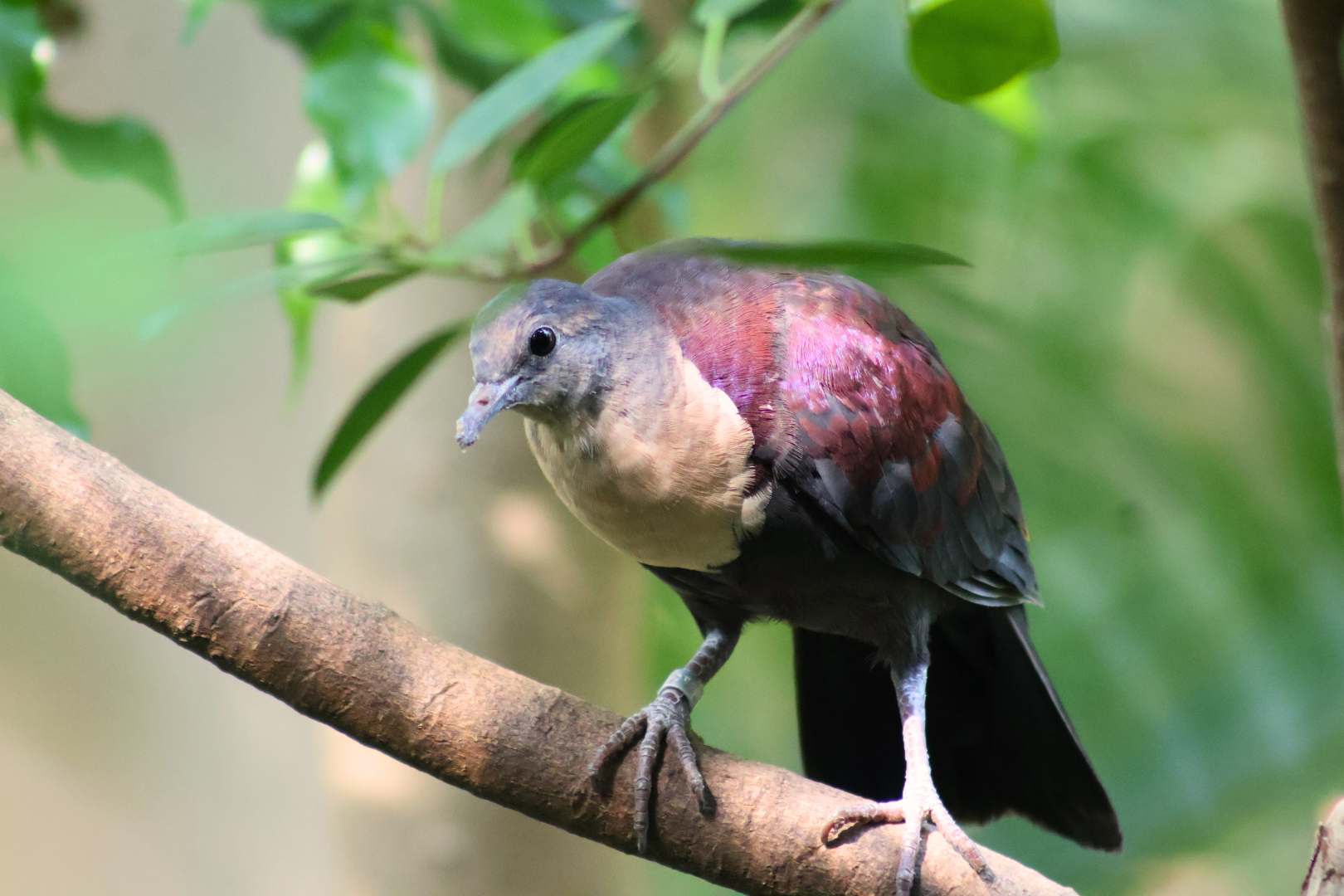I LIVE IN OCEANIA
The white-throated ground dove is native to the Northern Mariana Islands in the western Pacific Ocean. These tropical islands are filled with lush forests and vibrant vegetation!
I AM A FRUGIVORE
The white-throated fruit dove loves to munch on fruit and will occasionally feed on leaves and seeds as well!
WHITE-THROATED GROUND DOVES ARE SOLITARY
This bird species loves its space and is generally solitary outside of mating season. However, a male and female white-throated ground dove will build a nest together and take turns incubating their eggs until they hatch.
A SURVIVING SPECIES
The white-throated ground dove was once native to the island of Guam before the brown tree snake was introduced to the island in the 1940s. Today you can no longer find this bird species on Guam, but there are surviving populations in the Northern Mariana Islands, and there are conservation efforts at work to protect the white-throated ground dove!
HELPING THE WHITE-THROATED GROUND DOVE IN THE WILD
The Fort Wayne Children’s Zoo supports the Mariana Avifauna Conservation Project (MAC) and has sent knowledgeable staff overseas to contribute to research and conservation efforts surrounding native bird species of the Mariana Islands.
I AM IMPORTANT TO MY ECOSYSTEM
Because of the fruit-heavy diet, as well as other forms of vegetation, the white-throated ground dove plays an important role in their ecosystem dispersing seeds, aiding in biodiversity.

